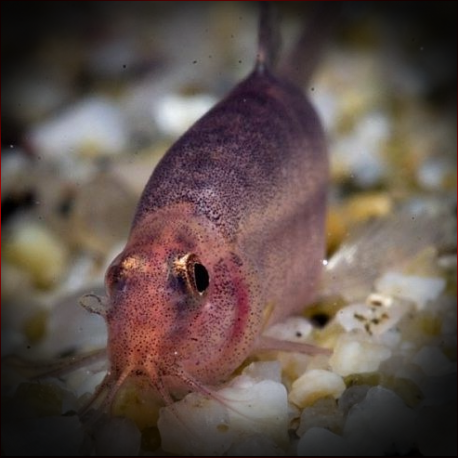More info
Datasheet
| Minimum Tank Size | 40 litres / 10.57 US gallons |
| Maximum Size | 3.0cm / 1.18inches |
| Temperature | 20°C / 68.00°F - 25°C / 77.00°F |
| Hardness | 2.02dgH / 36ppm - 15.02dgH / 268ppm |
| pH | 5.5-7.5 |
General Description
The Loktak Loach, scientifically known as Lepidocephalichthys cf. irrorata, is a small species that is rarely traded in the aquarium industry. It can be identified by the presence of large, exposed scales on the top of its head, a caudal fin with dark reticulations and elongated spots, and a size reaching up to 29 mm SL. This fish belongs to the Cobitidae family, which is widely distributed across Eurasia, with particular diversity in the Indian subcontinent, Southeast Asia, and China. Studies have shown that Lepidocephalichthys is genetically distinct from other closely related genera such as Pangio, Lepidocephalus, and Kottelatlimia.
Aquarium Setup
To keep Loktak Loaches healthy, it is essential to provide a soft, sandy substrate in the aquarium to facilitate their burying behavior. Coarser gravel can cause stress and inhibit feeding. Decorate the tank with water-worn rocks, driftwood branches, and tree roots to create hiding spots and shaded areas. Dim lighting is suitable unless you plan to grow plants, and adding leaf litter can enhance the natural feel of the setup. Avoid high flow rates in the water, as these fish come from sluggish waters, and ensure that the tank is well-covered as loaches are known to jump, especially when first introduced.
Behaviour
Lepidocephalichthys spp. are known for their peaceful nature, both towards their own species and other tankmates. They do best when kept in groups of four or more individuals and feel more secure in the presence of conspecifics or fish occupying the upper levels of the water column. These loaches may exhibit timid behavior when not accompanied by suitable tankmates, as the absence of upper-level fish in nature can signal potential danger.
Feeding and Diet
The Loktak Loach is considered a micropredator, sifting through mouthfuls of substrate to extract insect larvae and small crustaceans. In the aquarium, they can be fed sinking dried foods but should also be offered live or frozen foods like Daphnia, Artemia, and bloodworm to ensure a balanced diet.
Reproduction & Dimorphism
Information on the reproduction of Lepidocephalichthys spp. is currently unrecorded. Mature males exhibit enlarged pectoral fins with unique structures formed by specific rays, while adult females are typically larger and heavier-bodied compared to males.
Habitat and Distribution
These loaches are primarily found in the shallow, slow-moving sections of streams, swamps, oxbows, and paddy fields, often in heavily vegetated areas with soft mud or silt substrates. The Loktak Loach is specifically distributed in the Brahmaputra River basin, including parts of Bangladesh and northeastern states of India. Notably, Loktak Lake in India serves as a significant habitat for these fish but faces environmental challenges due to human activities such as deforestation, eutrophication, and siltation.

